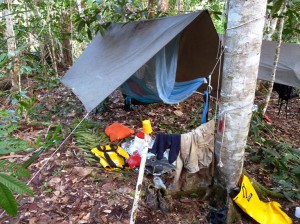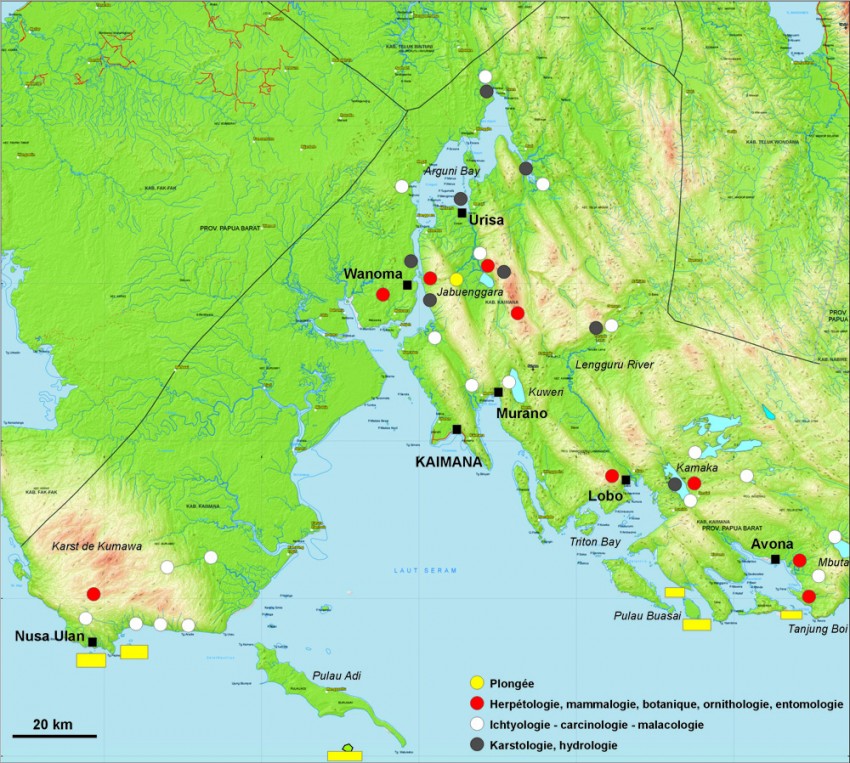In the forest. Underground or in the sea

Bivouac
© Christophe Thebaud
The 2014 Lengguru scientific expedition is aiming at recording and studying the biodiversity within a broad spectrum of ecosystems, using an innovative approach focusing on the impact of environmental factors, and on the adaptation and evolution of species.
The expedition will work in three types of environments:
- terrestrial, including sampling from rivers, endhoreic lakes, poljes, lapiez, and several types of forests from the sea level to the top of the anticlines at 1,200m (4,000 ft.);
- underground, including the exploration and cartography of various caves, dolines and underground rivers ;
- maritime, the exploration, cartography and bathymetry of the karst immerged parts.
74 participants in 7 villages over 7 weeks
The field work will be carried out between 17th October and 20th November 2014.
The places visited will all be in the Kaimana region : Buruway (Karang Derdi –Nusa Ulan village), Arguni Atas (Wanoma et d’Urisa villages), Triton Bay (Lobo and Kamaka villages), Kayumerah Bay (Avona village and Tanjung Boi cape).

The lengguru expedition sites
Collection of genetic material
Mammals, amphibians, reptiles, birds, insects, arachnids, algae, corals, fish, crustaceans, echinoderms, gastropods, orchids, palm trees, ginger…, will be studied in relation with their molecular (barcoding and additional nuclear and mitochondrial markers) and morphological (meristic, biometry, osteology) specificities. Samples collected will consist in pieces of fins, fragments of muscle, feathers, blood samples, etc.
All samples of genomic DNA for plants and animals will be collected in the Cibinong LIPI zoological and botanical laboratories.
All collected material will be recorded in the Indonesian reference collections (MZB-Cibinong for zoology, BO-Bogor and Man-Manokwari for botany). When material from new species is involved, part of it will be stored in international reference collections, after agreement has been given by the Indonesian scientific authorities and the IRD.

